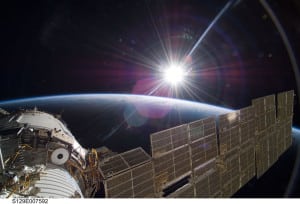NASA Awards CRS 2 Missions to Orbital ATK, SNC and SpaceX
[Via Satellite 01-15-2016] NASA revealed Orbital ATK, Sierra Nevada Corporation (SNC) and SpaceX as the winners of the long-awaited Commercial Resupply Services 2 (CRS 2) contract on Jan. 14. With a maximum potential value of $14 billion from now until 2024, the contract guarantees a minimum of six missions for each supplier to deliver and remove cargo from the International Space Station (ISS).
Though principally important for civil space, the CRS 2 contract has significant implications for the satellite industry as well. The contract is a major catalyst for the U.S. launch industry, providing consistency for a sector where long-lead times can drive up costs without a regular mission cadence. Orbital ATK’s upgraded Antares rocket and Cygnus module, SpaceX’s full-thrust Falcon 9 rocket and Dragon capsule, and United Launch Alliance’s (ULA) Atlas 5 rocket with SNC’s Dream Chaser spacecraft are all slated for use in resupplying the ISS from late 2019 until 2024.
Continued resupply launches from the U.S. also means more small satellite deployments from the ISS. In recent years, companies such as NanoRacks and Spaceflight Inc. have leveraged the space station to launch CubeSats and other small spacecraft for a range of customers. And the contract could also breathe new life into in-orbit servicing. In a 2015 interview with Via Satellite, SNC Space Systems Corporate VP Mark Sirangelo, said that using Dream Chaser, “on the way home from dropping cargo off at the ISS as an example, [could] fix or move something,” such as a damaged or derelict satellite.
In a Jan. 14 press conference, Kirk Shireman, ISS program manager at NASA’s Johnson Space Center, said the agency learned valuable lessons from the CRS 1 contract with SpaceX and Orbital ATK. The new contract includes some significant changes such as a requirement to measure not only mass, but also volume when filling cargo missions. Shireman said previous missions would often “volume out,” without using all the available mass. Balancing both metrics enables NASA to reduce the number of missions needed and lower costs. CRS 2 also includes an insurance requirement for damage to government property, which became a sticking point in the aftermath of Orbital Science’s Orb-3 Antares failure that damaged the Wallops Island, Va. launch facility.
Shireman said NASA weighed the 2014 Antares explosion and the 2015 Falcon 9 explosion when considering winners for CRS 2. Both incumbent providers won against competition from Lockheed Martin and Boeing. NASA has not yet ordered any missions from the three winners, but Shireman said the fixed-price, Indefinite Delivery, Indefinite Quantity (IDIQ) contracts began upon award. He declined to state the value of individual missions, though in a Jan. 14 press release, Orbital ATK said its six missions are valued at about $1.2 billion to $1.5 billion. Shireman said the cost of specific missions depends on the type of mission ordered. For example, while each servicer has the ability to deliver and dispose of cargo, only SNC and SpaceX can return cargo to Earth, and thanks to Dream Chaser’s runway landing capability, SNC can return cargo the fastest.
To bridge the gap between CRS 1 and 2, Shireman said NASA signed a task order with SpaceX for an additional mission, and has a proposal in hand from Orbital ATK that the agency is evaluating for more flights under CRS 1. Shireman praised the commercial nature of the ISS supply missions, adding that NASA intends to continue leveraging industry capability where possible.
“One of the things we are trying to do with ISS though [the Center for Advancement of Science in Space] CASIS is foster a Low Earth Orbit (LEO) economy,” he explained. “So where we have the opportunity to achieve that goal through commercial contracts like this that are fixed priced; I think you’ll see it continue. It’s hard to sit here and enumerate exactly what those are, but we want to make sure we get the best value.”
Shireman added that CubeSat and other SmallSat deployments from the ISS contribute to the LEO economy. Last year NASA also signed launch agreements specifically for small satellites with Virgin Galactic, Firefly Space Systems and Rocket Lab. Shireman said the agency expects other vehicles from international partners to continue servicing the ISS. Japan will resupply the station through its HTV spacecraft, and Shireman said Russia could contribute through new vehicles beyond the current Progress capsule. Europe, which ceased launching supply missions to ISS with the final Ariane 5 Automated Transfer Vehicle (ATV) mission in July 2015, could continue with future missions depending on the conclusions reached by the European Space Agency’s (ESA) ministerial-level approval process.
The next supply mission to the ISS — under CRS 1 — is the SpaceX 8 mission, also known as Falcon 9-23, for which a launch date has not been revealed. Orbital ATK’s next mission is scheduled for March 10 using a Cygnus capsule and a United Launch Alliance (ULA) Atlas 5 rocket.
The six missions each for Orbital ATK, SNC and SpaceX form the foundation for CRS 2 and the continuation of ISS supply missions, however this is not a fixed number. Shireman said NASA could procure more missions in the future. “It is likely that we will buy more than 18 flights,” he said.
